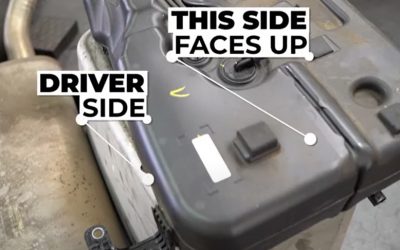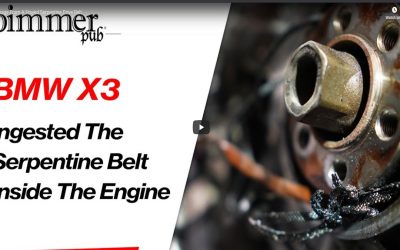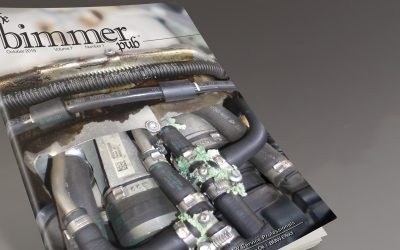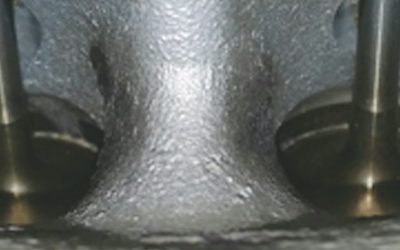Getting through a simple driveability concern (or a seemingly simple one…) can turn into a big problem for the shop and the customer very quickly if we are not well studied in our electrical theory and testing strategy on BMWs
Feature Articles:
Urea Passive Tank Sensor Code And Regeneration 2010 BMW X5
We’ll explore the location of the passive tank, why a bad sensor can’t just be replaced and the Regeneration process.
BMW F15 X5 No Code Suspension Diagnosis
BMW F15 X5 – NO CODE suspension Diagnosis – Customer complaint: “car rides rough.” Vehicle is riding low in the back. EHC returns no codes.
Damage from a Frayed Serpentine Drive Belt
We’re going to show how the owner was able to save their car’s engine after the crankshaft sucked the belt into the engine and what we did to repair the car and get it back on the road better than ever.
the bimmer pub october 2019
In this issue: BMW Cooling System Overview • Diagnosing Fuel Delivery Issues • A Thoughtful Approach to Diagnostics • Engine Oil: Decoding the alphabet soup • Sales and Service Booms from 25 Years of “The BMW Effect†• Promote Shop EV Service Readiness!
Promote Shop EV Service Readiness!
As BMW begins rolling out several new models of its advanced EVs, why not make everybody who visits your shop aware of your readiness to be right on top of the new EVs.
“The BMW Effectâ€
Twenty five years after BMW came to the United States with full scale manufacturing, service and support, its entrance is known as “The BMW Effect.â€
Engine Oil: Decoding the alphabet soup
Today the choice of engine oil is not a simple exercise, even within a single marque like BMW. Different engine families have different requirements, and those requirements are spelled out in great detail in BMW service literature.
A Thoughtful Approach to Diagnostics
BMW’s newer modular engines are quite complex, both in construction and operational theory, especially in the case of Gasoline Direct Injected (GDI) engines. The industry is now acutely aware of the carbon issues plaguing these GDI vehicles.
BMW Cooling System Overview
BMW cooling systems have been keeping repair technicians and enthusiasts busy for a long time. Cooling system issues almost seem like the Achilles heel for BMW vehicles as they are quite common. As far back as the E30, clogged radiators and blown coolant hoses were common.
the bimmer pub october 2018
In the bimmer pub, october 2018: If It’s Not One Thing It’s Another; BMW Diesel Overview; Mastering Plastic Repair
Mastering Plastic Repair
Plastic reconstruction is simple. We offer tips on deciding between reshaping, adhesive bonding or plastic welding for your repair.












